faculty
|
|
John W. DowerJohn W. Dower is a Professor Emeritus at the Massachusetts Institute of Technology and co-founder, in 2002, of MIT's "Visualizing Cultures" project, a website that breaks new ground in the scholarly use of visual materials to reexamine the experience of Japan and China in the modern world. As of 2014, eleven of the presentations on this multi-unit site were authored by him. Dower’s 1999 book Embracing Defeat: Japan in the Wake of World War II won the U.S. National Book Award for Nonfiction, the Pulitzer Prize for General Nonfiction, the Bancroft Prize, the Los Angeles Times Book Prize, the Mark Lynton History Prize, and the John K. Fairbank Prize of the American Historical Association. Dower earned a bachelor's degree in American Studies from Amherst College in 1959, and a Ph.D. in History and Far Eastern Languages from Harvard University in 1972. He expanded his doctoral dissertation, a biography of former Japanese Prime Minister Yoshida Shigeru, into the book Empire and Aftermath. His many other publications include a selection of writings by E. Herbert Norman and a study of mutual images during World War II entitled War Without Mercy: Race and Power in the Pacific War. Dower was the executive producer of the Academy Award-nominated documentary Hellfire: A Journey from Hiroshima. He has taught at the University of Wisconsin–Madison and the University of California-San Diego. He has been a fellow of the American Academy of Arts and Sciences since 1991, and was honored with the American Historical Association's "Award for Scholarly Distinction" in 2013. |
 |
andrew gordonAndrew Gordon is the Lee and Juliet Folger Fund Professor of History at Harvard University. His teaching and research focus primarily on modern Japan. He has also taught Japan’s premodern history and courses on comparative history of labor. His most recent publication is Fabricating Consumers: The Sewing Machine in Modern Japan (University of California Press, 2011), on the emergence of the modern consumer in Japan, using the sewing machine as window on that story. An earlier book, Labor and Imperial Democracy in Prewar Japan (University of California Press, 1991) won the John King Fairbank Prize in 1992 for the best book on modern East Asian history, and was a finalist for the 1992 Arisawa Hiromi Prize for the best book on Japan. His textbook, A Modern History of Japan, was published in fall 2002 by Oxford University Press, and in Japanese, Chinese, and Korean translations. The third edition was published in 2013. Gordon has served as chair of the Harvard History Department (2004-07) and director of the Reischauer Institute for Japanese Studies (1998-2004 and 2010-2011). Before joining the Harvard faculty he was a member of the history department at Duke. He received his Ph.D. from Harvard University in 1981 in History and East Asian Languages. In 2014 he was elected as member of the American Academy of Arts and Sciences. |
 |
Shigeru MiyagawaShigeru Miyagawa has been at MIT since 1991. He is Professor of Linguistics and Kochi-Majiro Professor of Japanese Language and Culture. He also holds a joint project professorship at the University of Tokyo, where he is Director of Online Education. He has been the Chair of the MIT OpenCourseWare Faculty Advisory Committee, and was on the original MIT committee that proposed OpenCourseWare. He has helped to start OpenCourseWares around the world. For his work with OCW, he was awarded the President’s Award for OCW Excellence from the Global OpenCourseWare Consortium. He is also Co-director of Visualizing Cultures (visualizingcultures.mit.edu) with the Pulitzer Prize-winning historian, John W. Dower, which was awarded MIT Class of 1960 Innovation in Education Award. He is also the producer of the multimedia program, StarFestival, which was awarded the Distinguished Award at the Multimedia Grandprix 2000 (Japan), and a regional Best of Show at the 1997 MacWorld Exposition. For his work in technology and education, he has been recognized with the Irwin Sizer Award For the Most Significant Improvement to MIT Education, and “Shapers of the Future” by the educational technology magazine Converge. In linguistics, he is the author of Case, Argument Structure, and Word Order, Leading Linguists Series (Routledge, 2012), Why Agree? Why Move? Unifying Agreement-based and Discourse Configurational Languages, published by MIT Press (2010), and co-editor of Oxford Handbook of Japanese Linguistics published by the Oxford University Press (2008), along with over fifty articles on various linguistics topics. He received his B.A. from the International Christian University in 1975 and his Ph.D. from the University of Arizona in 1980. |
 |
Gennifer WeisenfeldGennifer Weisenfeld is Professor of Art, Art History & Visual Studies at Duke University. Her field of research is modern and contemporary Japanese art history, design, and visual culture. Her first book Mavo: Japanese Artists and the Avant-Garde, 1905-1931 (University of California Press, 2002) addresses the relationship between high art and mass culture in the aesthetic politics of the avant-garde in 1920s Japan. And her most recent book Imaging Disaster: Tokyo and the Visual Culture of Japan’s Great Earthquake of 1923 (University of California Press, 2012, Japanese edition, Kantō Daishinsai no Sōzōryoku: Saigai to Fukkō no Shikaku Bunkaron, Seidosha, forthcoming 2014) examines how visual culture has mediated the historical understanding of Japan’s worst national disaster of the twentieth century. In addition to co-editing the volume Crossing the Sea: Essays on East Asian Art in Honor of Professor Yoshiaki Shimizu, with Gregory Levine and Andrew Watsky (Princeton University Press, 2012), she has written numerous journal articles, including several on the history of Japanese design, such as, “‘From Baby’s First Bath’: Kaō Soap and Modern Japanese Commercial Design” (The Art Bulletin, September 2004) and the core essay on MIT’s award-winning website Visualizing Cultures on the Shiseido company’s advertising design. She is currently working on a new book on the history of Japanese advertising and commercial design titled The Fine Art of Persuasion: Corporate Advertising Design, Nation, and Empire in Modern Japan. |
Project Team
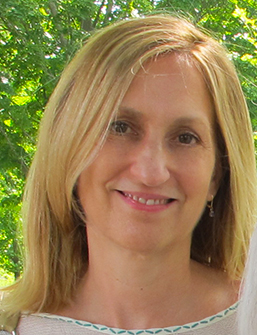 |
ellen sebringLead Content Developer for MITx on VJx v1. Ellen Sebring has been Research Associate/Creative Director of Visualizing Cultures at MIT since the project’s founding in 2002. Her own Visualizing Cultures unit, “Civilization & Barbarism” premieres September 2014. Sebring earned a Masters degree at MIT and was a Fellow at MIT’s Center for Advanced Visual Studies for six years. Currently a PhD candidate at the Centre for Advanced Inquiry in the Interactive Arts, University of Plymouth, UK, her publications include Transcultural Tendencies | Transmedial Transactions (Bristol, 2012); Consciousness Reframed 12, (Universidade de Aveiro, Portugal 2011). As President of Botticelli Interactive (1997-2002) Sebring directed new media development, including the “Titian Kiosk,” awarded The New York Festivals’ World Medal; an interactive television prototype commissioned by the Institute for Civil Society; "Star Festival," Best of Show at MacWorld Expo; and "StarNetwork," starring George Takei, awarded the Distinguished Award at the Multimedia GrandPrix 2000, Tokyo. Selected for the Directing Workshop for Women at the American Film Institute to direct a film in Hollywood, Sebring has also directed documentaries on the arts, including "Severe Clear," featuring light artist James Turrell for Public Television. Awards include The Artist's Foundation Fellowship for Video Art, Canon Europa prize at the WorldWide Video Festival, Holland, and commissions for national broadcasts by WGBH and WNET. |
 |
jascha smilackProject Lead for VJx. Jascha earned his Ph.D. in East Asian Languages and Civilizations from Harvard. He taught Chinese literature from all periods at Tufts University from 2011 to 2013, during which time he was also a program coordinator at Harvard's Fairbank Center for Chinese Studies. During his graduate years at Harvard, he spent six years as a Presidential Instructional Technology Fellow and five as Assistant Director of East Asian Studies. Joining HarvardX in 2013, Jascha is also Project lead for JusticeX, ContractsX, and First Nights (in development). For VJx, Jascha served as the project lead, managing all aspects of development, including production of all video, leading on instructional design, administration, intellectual property, and course delivery. |
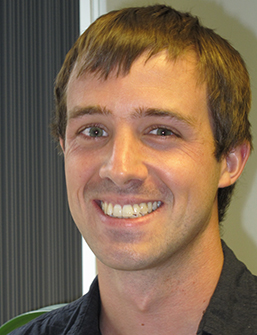 |
michael thorntonLead Content Developer for HarvardX for Visualizing Japan, and teaching fellow for the MITx run of the course in 2016. A native of Kobe and Tokyo, Japan, Michael Thornton is a Ph.D. candidate in the History Department at Harvard University. He earned his B.A. in History at Yale University, and spent a semester as a visiting student at the University of Heidelberg, Germany. His teaching and research interests include early modern and modern Japanese history, urban history, and environmental history. He is currently writing a dissertation on the history of Sapporo in the late nineteenth century. As Course Developer, Michael wrote all of the assessments and course text, and he designed the overall structure of Visualizing Japan. He contributed themes for discussion in video pre-production, edited notes for video post-production, compiled and tracked revisions through beta-testing, and also created the image citations. |
|
|
Amin GhadimiTeaching Fellow for VJx v1. Amin Ghadimi is a doctoral student in History and East Asian Languages at Harvard. He specializes in modern Japanese history. His recent research projects have dealt with connections among the local, national, and transnational in the political history of the opening of Kobe as a treaty port; the roles of affect and happenstance in the diplomatic history of the Meiji Restoration; and the relationship between democracy and imperialism in the intellectual history of the radicalization of the Movement for Freedom and Popular Rights. Amin holds a B.A. in East Asian Studies from Columbia and an M.A. in the same field from Yale. He was born and raised in Kobe. |
 |
Maria KobrinaVideo Editor at HarvardX, Maria is a Boston based graphic artist and video editor. She graduated Summa Cum Laude from Emerson College with a BFA in Visual and Media Arts and has since been working primarily in online education. Maria joined the HarvardX in 2014, and Visualizing Japan has been one of the first online courses she has worked on. For VJx, she edited all of the videos. |
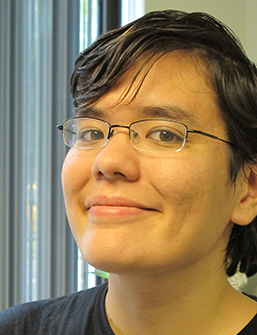 |
alyssa walnMIT UROP. A Junior at MIT majoring in Computer Science with a minor in Japanese. Interested in UI/UX design. I am the source of bugs in the new, experimental assessments (other than Annotation Tool exercises which were made by HarvardX). I was on the course team for version 1. |
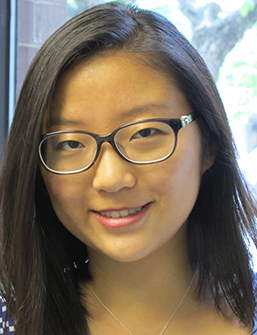 |
Sophie CaoMIT UROP. Junior majoring in Brain and Cognitive Sciences. I'm interested in languages and language acquisition. For VJx version 1, I worked on putting up text and image content. In my free time, I enjoy making/eating food and sleeping. |
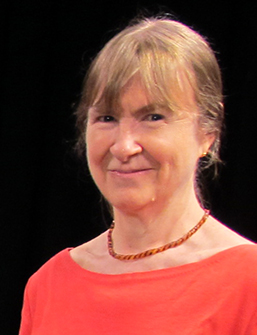 |
Sylvia MorrisonVideo post-production assistant for VJX v1. Sylvia is an independent video producer and editor specializing in educational content. She documented the work of the famous Yoga master, B.K.S. Iyengar, including his 75th birthday celebration in India and produces and distributes DVDs specializing in yoga. In addition, she carries on a family tradition, distributing a unique collection of classic train films produced by her father. |
 |
Helen HoProject assistant for VJx. Helen is a MIT '19 majoring in Computer Science and minoring in Japanese. She worked on fixing accessibility issues within the course, and updated older features for the 2016 release of the Visualizing Japan course. She is interested in the intersection of technology and culture. |
Additional support provided by MITx and HarvardX administrative and technical teams. Additional thanks to HarvardX for filming and editing all lecture video for the course. Additional thanks to HarvardX for developing the Image Annotation Tool v1 and v2!
This "Visualizing Japan" MOOC builds on the MIT "Visualizing Cultures" project, which received generous funding from the Andrew W. Mellon Foundation, Henry Luce Foundation, the Getty Foundation, Japan Foundation's Council for Global Partnership, National Endowment for the Humanities, and MIT's d'Arbeloff Fund for Innovation in Undergraduate Education and MIT Microsoft-funded iCampus project.
IMAGE CREDITS
Whereas many of the images themselves are licensed under the CC BY NC SA license, the other course content and materials remain subject to the Edx Terms of Service.
The following institutions have generously opened their archives to Visualizing Cultures scholars and provided images from their collections for publication on the website:
Arthur M. Sackler Gallery, Smithsonian Institution
http://www.asia.si.edu
Mid-19th-century Japanese prints from the Sackler’s William Leonhart Collection are the basis of a unit featuring the earliest Japanese images of “foreigners of the five nations” as seen—and more often just vividly imagined!—in the treaty-ports of the 1860s.
Units:
Yokohama Boomtown
Hiroshima Peace Memorial Museum
http://www.pcf.city.hiroshima.jp/index_e2.html
The museum’s collection of over 2,000 paintings and drawings by survivors of the August 1945 atomic bombing of Hiroshima is the basis of a VC unit on the world’s first “Ground Zero.” Done mostly in the early 1970s, these are the personal images of the nuclear experience that burned themselves on the minds of survivors. They provide the most intimate insight imaginable into the human dimension of nuclear warfare.
Units:
Ground Zero 1945
Honolulu Academy of Arts
http://www.honoluluacademy.org
The Academy provided VC with the spectacular “Black Ship Scroll” painted in Japan around 1854, at the time of the second Perry mission. A 1960 gift of Mrs. Walter F. Dillingham, in memory of Alice Perry Grew, VC has reconstructed this thirty-foot-long horizontal scroll in several formats, including a video that permits it to been seen “whole” by anyone for the first time. Both the contradictions within the scroll (such as jolly as well as demonic foreigners) and its frequent old-fashioned humor make this a rare visual “text.”
Units:
Black Ships & Samurai
Hood Museum of Art, Dartmouth College
http://hoodmuseum.dartmouth.edu
Photography albums in the Hood Museum’s collection are the sources for several units by Dartmouth Professor of Art History Allen Hockley. These include a late 1860s album by pioneer photographer Felice Beato and a deluxe 10-volume edition of Francis Brinkley’s Japan from the 1890s. The transition of travel photography from collector’s item to commercial commodity profoundly influenced foreigners’ understanding of exotic and alien cultures—and the Web now makes it possible to reassemble these images and give them new life and meaning.
Units:
Felice Beato’s Japan: Places, Globetrotters’ Japan: Places, Globetrotters’ Japan: People
Museum of Fine Arts, Boston
http://www.mfa.org
The extensive Asian art collection of the Boston MFA has been a major resource for several VC units. The Jean S. and Frederic A. Sharf Collection of Japanese woodblock prints is the basic source for the three-part “Throwing Off Asia” unit—providing a stunning view of Westernization in late-19th-century Japan, the Sino-Japanese War of 1894–95, and the Russo-Japanese War of 1904–05. Many of the Sharf prints were digitized for the first time for use in VC units. The extraordinary Leonard A. Lauder Collection of Japanese Postcards was the source of foreign as well as Japanese graphics used in two units on the Russo-Japanese war—opening up an entirely new window for understanding popular global perceptions and emotions during Japan’s emergence as a major military power.
Units:
Throwing Off Asia I, II, III; Asia Rising; Yellow Promise/Yellow Peril
Peabody Essex Museum
http://pem.org/homepage/index.php
One of the premier American museums for Asian export art, the Peabody Essex Museum in Salem, Massachusetts, contributed images depicting the early China trade based on paintings and artifacts in its outstanding collection.
Units:
The Rise & Fall of the Canton Trade System (in development)
Ryosenji Treasure Museum
http://www.izu.co.jp/~ryosenji/eigo.html
This little gem of a museum, affiliated with the Ryosenji Temple in Shimoda (one of the two Japanese ports opened for use by Commodore Perry in 1854), houses a fine collection of popular graphics that illuminate the strikingly diversified responses of the Japanese to this rude and ominous foreign intrusion. The generosity of Abbot Daiei Matsui in making his collection accessible was instrumental in launching VC’s pioneer first unit on Japan’s opening to the West.
Units:
Black Ships & Samurai
Shiseido Corporation
http://www.shiseidogroup.com/
Founded at the very beginning of the 20th century, the history of the Shiseido cosmetics firm amounts to a small mirror on the history of modernity in Japan—reflecting changing ideals of feminine beauty, the emergence of a vibrant consumer culture, cutting-edge trends in packaging and advertising art, and the persistence of cosmopolitan ideals even in the midst of the dark valley of war and oppression. Shiseido has opened its huge and exceptionally rich archives to VC as it moves on to bring a scholarly lens to popular culture in the 20th century.
Units:
Selling Shiseido I, II, III
Smith College Museum of Art
http://www.smith.edu/artmuseum/index.htm
A pristine 50-print photo album from the Smith College of Art collection featuring views of Japanese people by Felice Beato provided VC with the basis for showing the birth of commercial photography of Japan for the tourist trade. Beato’s famous images set a pattern for what foreigners saw (and failed to see) in Japan for decades to come.
Units:
Felice Beato’s Japan: People
Additional Contributing Institutions
Allentown Art Museum
Bard Graduate Center
Chicago Historical Society
Chrysler Museum of Art
George Eastman House
Harvard University
Honolulu Bishop Museum
Kobe City Museum
Library of Congress
Nagasaki Municipal Museum
Nagasaki Prefectural Art Museum
New Bedford Whaling Museum
Shimura Toyoshiro Collection
Shiryo Hensanjo, University of Tokyo
Smithsonian Institution
Smithsonian Institution Division of Photographic Resources
Tokyo National Museum
US Naval Academy Museum
US Naval Historical Center
White House Historical Association
Yokohama Archives of History
Yokohama Museum of Art

